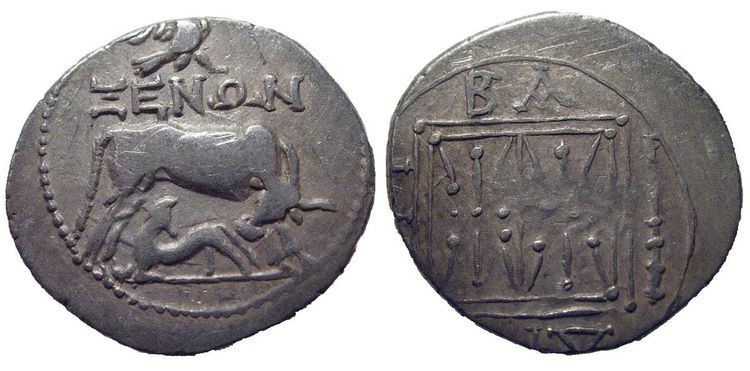 | ||
The dram (alternative British spelling drachm; apothecary symbol ʒ or ℨ; abbreviated dr) was originally both a coin and a weight in ancient Greece. It refers to a unit of mass in the avoirdupois system, and both a unit of mass and a unit of volume in the apothecaries' system. The unit of volume is more correctly called a fluid dram, fluid drachm, fluidram or fluidrachm (abbreviated fl dr, ƒ 3, or fʒ).
Contents
Ancient unit of mass
A coin weighing one drachma is known as a stater, drachm, or drachma. The Ottoman dirhem was based on the Sassanian drachm, which was itself based on the Roman dram/drachm.
British unit of mass
The British Weights and Measures Act of 1878 introduced verification and consequent stamping of apothecary weights, making them officially recognized units of measurement. By 1900, Britain had enforced the distinction between the avoirdupois and apothecaries' versions by making the spelling different:
Modern unit of mass
In the avoirdupois system, the dram is the mass of 1⁄256 pound or 1⁄16 ounce. The dram weighs 875⁄32 grains, or exactly 7000177184519531250♠1.7718451953125 grams.
In the apothecaries' system, which was widely used in the United States until the middle of the 20th century, the dram is the mass of 1⁄96 pounds apothecaries (lb ap), or 1⁄8 ounces apothecaries (oz ap or ℥) (the pound apothecaries and ounce apothecaries are equal to the troy pound (lb t), and troy ounce (oz t), respectively). The dram apothecaries is equal to 7000300000000000000♠3 scruples (s ap or ℈) or 7001600000000000000♠60 grains (gr), or exactly 7000388793460000000♠3.8879346 grams.
"Dram" is also used as a measure of the powder charge in a shotgun shell, representing the equivalent of black powder in drams avoirdupois.
Unit of volume
The fluid dram is defined as 1⁄8 of a fluid ounce, and is exactly equal to:
A teaspoonful has been considered equal to one fluid dram for medical prescriptions. However, by 1876 the teaspoon had grown considerably larger than it was previously, measuring 80–85 minims. As there are 60 minims in a fluid dram, using this equivalent for the dosage of medicine was no longer suitable. Today's US teaspoon is equivalent to exactly 1⁄6 US fluid ounces, 1 1⁄3 US fluid drams, or 80 US minims.
While pharmaceuticals are measured nowadays exclusively in metric units, fluid drams are still used to measure the capacity of pill containers.
Dram is used informally to mean a small amount of spirituous liquor, especially Scotch whisky. The unit is referenced by the phrase dram shop, the US legal term for an establishment that serves alcoholic beverages.
In popular culture
The line "Where'd you get your whiskey, where'd you get your dram?" appears in some versions of the traditional pre-Civil War American song "Cindy". In Monty Python's song entitled The Bruces' Philosophers Song there is the following line: "Hobbes was fond of his dram". In the old-time music tradition of the United States, there is a tune entitled "Give the Fiddler a Dram".
In the episode "Double Indecency" of the TV series Archer the character Cheryl/Carol was carrying around 10 drams of Vole's blood and even offered to pay for a taxi ride with it.
